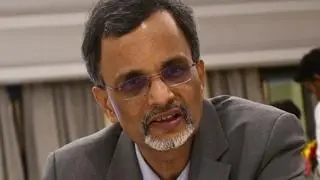Indian steel imports at 0.57 million tonne (mt) outpaced exports which stood at 0.29 mt in October as India continued to be a net importer for the month. Lack of export offers from Vietnam, West Asia and slowdown in Europe impacted numbers, even as lower priced offers from China made their way into the country.
As per a report of the Steel Ministry, accessed by businessline, imports exceeded exports by nearly 0.28 mt.
According to the report, imports for the month decreased by 4 per cent YoY (from 0.6 mt in Oct 2022) while exports dipped 21 per cent (from 0.36 mt). However, on a month-on-month basis, imports shot-up by 50 per cent, from 0.38 mt in September, indicating cheaper Chinese and Vietnamese offerings eating into the share of domestic steel makers, trade sources said. Export numbers improved by 78 per cent m-o-m as September exports – one of the worst in the last five years – was just 0.16 mt.
For the seven-month period, from April-October, India remained a net exporter of steel with 3.52 mt being shipped out, (down 11 per cent over the 4 mt exported in 7MFY23) while shipments coming in stood at 3.47 mt (up 10 per cent over 3.2 mt).
“India steel imports have grown during H1 FY24 (April-September). Imports into India are rising and hence remains an area which we need to watch out. During this period, exports also moderated,” Jayant Acharya, Joint MD and CEO, JSW Steel said, during an earnings call. The company’s share of exports in July – September quarter was re-balanced to 11 per cent “given global headwinds”.
Category-wise mix
During the month under review, non-alloyed steel exports saw a 277 per cent increase y-o-y to 0.24 mt. Last October, an export duty had dragged down offers, trade sources said. On the other hand, imports in the category shot up by 28 per cent to 0.47 mt. Stainless and alloyed steel offers witnessed a decline across - both export and import segments - by 86 per cent and 53 per cent, respectively.
On a month-on-month basis, non-alloyed steel shipments coming into the country shot up by 80 per cent, once again reflecting the widening price gaps between Chinese offerings and those here. Exports recovered and was up 75 per cent. In the stainless and alloy steel segment, imports came down by 13 per cent while exports was up 102 per cent.
Speaking on the price gap, Acharya pointed out that there was an attempt to “offload excess stock” by some countries and said: “If somebody were to convert with the current raw material, then the prices at which some of those imports of the lower price have come in are not sustainable.”
According to him, international prices have likely bottomed out. “Internationally, steel prices have bottomed out and with these raw material prices (increasing coal costs primarily), it is likely to see an increase and reflect that in steel prices going forward,” he said.









Comments
Comments have to be in English, and in full sentences. They cannot be abusive or personal. Please abide by our community guidelines for posting your comments.
We have migrated to a new commenting platform. If you are already a registered user of TheHindu Businessline and logged in, you may continue to engage with our articles. If you do not have an account please register and login to post comments. Users can access their older comments by logging into their accounts on Vuukle.